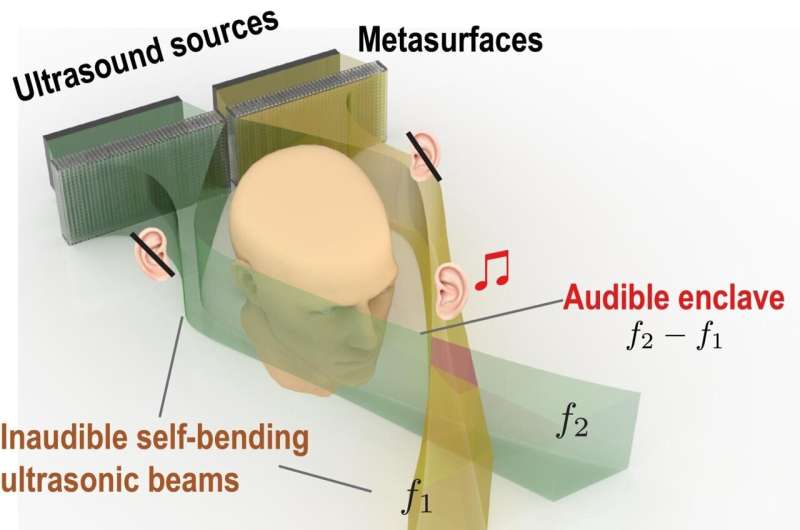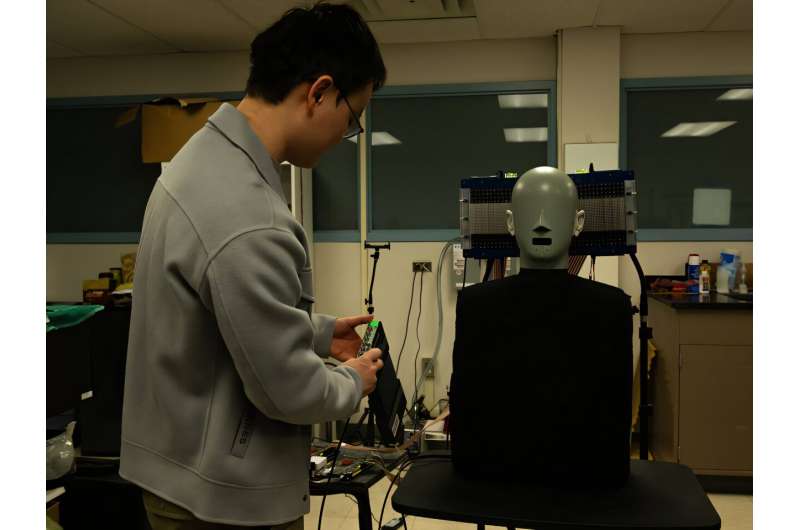An innovation in audio technology might make this a reality, creating personal sound zones through ultrasonic waves.

Researchers at Penn State have developed a groundbreaking method to deliver sound to a specific location without headphones, allowing only the intended listener to hear it while those nearby remain undisturbed. This innovation, called an “audible enclave,” could revolutionize audio privacy in shared spaces.
The research team, led by acoustics professor Yun Jing, achieved this feat by using two ultrasonic beams to create a localized sound zone. These beams, when emitted from specially designed transducers paired with an acoustic metasurface, travel in curved paths and intersect at a precise point. Only at this intersection is the sound audible, forming a private listening area for the user.

“We essentially created a virtual headset,” said postdoctoral scholar Jia-Xin “Jay” Zhong. “Someone within an audible enclave can hear something meant only for them—enabling sound and quiet zones.”
Unlike traditional speakers, which broadcast sound waves in all directions, this system relies on acoustic metasurfaces—3D-printed microstructured lenses—that manipulate ultrasonic waves to focus sound. The researchers tested the system using a simulated human head with built-in microphones, confirming that sound was only perceivable at the designated intersection point.
This innovation has vast potential applications, from enabling private conversations in crowded spaces to enhancing in-car audio systems. The researchers tested their setup in a standard room with normal reverberations, proving its effectiveness in real-world conditions.
Currently, the system can transmit sound up to one meter with a volume of around 60 decibels—similar to normal conversation levels. However, the researchers believe future advancements could extend this range and volume by adjusting ultrasound intensity. With further development, this technology could redefine personal audio, making silent yet immersive listening experiences possible without the need for traditional headphones.







